Tell us about your music projects in the 60's prior to your electronic experimentation...
Well, in the 1960's I was in middle and high school. My main project was a band I was in which was fundamentally a cover band - we didn't know much else at the time. I suppose we were the hottest thing in Alliance, Ohio, which isn’t saying a lot! But I did get experience with the first Fuzztones, Echoplexes, and the like, which frankly interested me more than the music we were actually performing. This was British invasion stuff like Beatles, Kinks, Yardbirds… when I graduated high school and left the band for college, Hendrix, Cream, and Pink Floyd were starting to happen, so in a sense I missed out on a fundamental thing that was getting going. I didn't dip into music creation again for some years.
When did you first become interested in electronic music? What was your inspiration to start creating within this realm of exploration?
My last year of high school a couple of things happened. Sgt. Pepper came out and I was mesmerized by the sounds and the obvious use of the recording studio. But at the same time I was discovering real electronic music; unbelievably, the record bins at places like K Mart (my cultural backwater had no record stores) actually held the occasional disc of Stockhausen, Ligeti, Ussachevsky, Varese, etc., and this stuff really spoke to me.
Where do you draw your inspiration from ?
That’s easy. That same year I took a trip to Cleveland and visited some actual record stores, where I always went for the “other” bin. The album covers of Tod Dockstader’s Owl releases were very intriguing, and the clerk put a couple on for me. I was hooked immediately. To my mind, Tod blew away the academics and really gave me something to sink my teeth into. His work of the 1960's inspires me to this day. As you know, I was lucky enough to eventually track Tod down and begin a friendship which ultimately resulted in two collaborative albums, Pond and Bijou.
You must understand that before Bob Moog came along, electronic music represented a truly mysterious world beyond ordinary reality. That was what really resonated with me; it was one phenomenon which proved to me that there exists something which supersedes the mundane life we take for granted. These sounds were not of this world, but there they were! Magic! Then of course MIDI came along, followed by sampling and legions of synthesizer platforms, and finally the computer, which has come to rule all. Right now you will not hear any music untouched by electronics; call me a dinosaur, but the magic is gone, irretrievable….
You moved to New York in 1977, was it the attraction of the New York music and art scene?
I moved here for different reasons, one of which was the publishing industry. I studied illustration in California and realized that NYC was one of the only places I could make that happen; I still make my way in the material plane from graphics work.
About 1979 I became aware of Eno, Cluster, Fripp, Kraftwerk, etc., and simultaneously the home recording thing was becoming a reality. The Tascam 3440 was crucial - suddenly the artist’s studio had an audio counterpart. I had worked off and on as a visual artist, but now it seemed my real interest - electronic music - could be approached in the same way, on a very personal level. Almost overnight I was staying up until 4 AM etching circuit boards and soldering wires. I built a whole electronic music studio from kits, and later, working directly from schematics. I love hardware.
Pretty soon I started meeting people like Gen Ken Montgomery (creator of the Generator music gallery), his cohort David Prescott, Stefan Tischler and Keith Walsh (Port Said), and others working in the cassette scene. It was pretty much all about recordings, and performances to a lesser degree. At that time, I was not doing any performing since I didn’t see how - it was all to tape.
From 1980 to 1986 I pursued music more along the lines of Tangerine Dream, Vangelis, and so on. Perhaps I was enchanted by the idea of doing melodies, harmonies, song structures, etc. Hey look, I'm a “musician”! So for a good while there I wasn’t actually in an “experimental” vein, though why not is a mystery to me now. Maybe I thought I might actually make some sort of career out of it. We were all optimistic at the time. Some of the people who were putting out electronic music cassettes then are now known names in the film score biz and elsewhere.
During this time I took in a lot of interesting performances, a lot at CBGBs, Mudd Club, and so forth. Glenn Branca premiered his “Symphony #1” at The Performing Garage and it blew my mind (and ears, let me tell you). Glenn and Rhys Chatham, with I believe Arto Lindsay, shattered CBGBs with an unprecedented guitar barrage one eventful night. Pure noise wonderfulness. The one thing I’ll always remember about CBGBs: one night waiting for a set by Television or one of their ilk, a young fellow came out who appeared to be a roadie, setting up for a band. A real nerd type, pocket protector with pens, flannel shirt, horn rimmed glasses…. Slowly he set out a batch of small pedals and gizmos on the floor, connecting them up one by one. No one paid any attention, continuing to drink and chatter. We assumed he was just a setup person. But gradually this guy (whoever he was) set the devices in motion and they began to make sounds. After a few minutes there was a real noise rhythm thing going on and we all sat up and looked. So cool! Then he quietly unplugged everything and walked off. No announcement, no name, nothing. I’d love to know who he was….
The scene today… well, I’m a bit of a recluse (as my music acquaintances will attest to), but Manhattan has become a yuppie playground and only the rich can take part. Places like Roulette and Generator have been pushed to the outer boroughs or extinguished altogether. From what I can make out, even Brooklyn has trouble keeping these places alive. Where’s the next Bohemian enclave? I fear there is none. Perhaps we’ll just have to make do with virtual experience via the internet….
What was the first piece of music you recorded?
Hah, a trick question! Who knows? That is lost to history. The real “first” was when I stumbled upon Feedback Music and recorded day and night onto Beta HiFi tape, which wound up as “Engines of Myth”, the first Arcane Device release.
Arcane Device has been your main vehicle and what people know you the most for, how did the concept for AD come about? What was the inspiration for the feedback machines?
In 1986 I was very taken with the long digital delays that were being produced. I’d always loved the tape delay work that Terry Riley, Steve Reich, and Fripp/Eno had done, and ever since my first encounter with an Echoplex years before, delay technology had been a kind of holy grail for me. Now the tech was catching up and I experimented with Electro-Harmonx, Art, and Digitech units. Finally I settled on Digitech 7.6 second delays, bought four of them and set about to build them into a self contained console. Really I was looking to create the ultimate guitar looping rig, but while designing the layout I figured that I should make it as flexible as humanly possible. This resulted in, to my knowledge, the first “matrix mixer” ever created. Nowadays this seems more commonplace, but at the time it was unique - a mixer which could feed multiple effects and return their outputs to all others, plus themselves - i.e., feedback loops. As soon as I powered up the layout, I immediately discovered that I needed no input: the delays themselves created their own sounds. Thus the Feedback Music was born, and others dubbed my creation the Feedback Machine. Other such machines followed, flowered, and alas, died. The cycle of life, eh?
Your gravitation towards the feedback compositions, do you find this approach personally the ultimately pure medium of expression within electronic composition? Do you think it imbues the recording with more life?
Over the years I have made music with guitars, synthesizers, samplers, found objects, stolen sounds, and computers of course, but I always return to Feedback. Perhaps it is just the source that I resonate with most perfectly. But yes, somehow this source is much more alive than any other I have worked with. I’ve tried the most elaborate synths and sampling controlled by very flexible computer programs, but it never gives the living quality of Feedback.
Whereabouts have you played live with AD , and where have you found your music most well received?
I’ve not performed for several years, but in the past I’ve played from Pittsburgh and Cleveland, to Boston here on the East Coast. New York obviously - The Knitting Factory, The Kitchen, CBGBs, Roulette, The Clocktower, Experimental Intermedia, Generator, Performing Garage, White Columns, etc. My one foray into Europe was concerts in Copenhagen and Hamburg. Only now considering maybe putting some gear together and tentatively stepping out again….
To my surprise, the music has been appreciated pretty world-wide. I’ve had releases from labels in England, Germany, The Netherlands, Portugal, Spain, and Russia. Fans have written me and ordered recordings from Africa , Japan, Thailand, Eastern Europe, Australia, and I can’t remember how many other locales….
How did you come to collaborate with Asmus Tietchens?
I had been a fan of Asmus for a long time. Quite frankly, I simply contacted him with a collaboration proposal and he found the Feedback source to be ideal for his approach. It went so well that we went on to do four albums together.
Nanotube on Pulsewidth , the label you run yourself, is your foray into beat driven electronica, somewhat prolonged as although AD LPs were released during the techno/electronica boom you never seemed to let it directly influence your sound….
Well, although Feedback has always been my home base as it were, I’ve not been able to keep my fingers out of various pies; there’s just too much to explore. Actually, probably my first “beat driven” project was a Pulsewidth album called Cel. I used Feedback sources and raw electronic pulses driven by sequencing software. Regarding Asmus Tietchens again, I sent him a copy of this recording and he was very disapproving. He’s a purist and this apparently was unacceptable; my feeling is that from this time forward he kind of wrote me off. I haven’t heard from him in many years.
Are there any artists you admire in the field of modern beat driven electronica?
I will have to admit that for some time I’ve been unconnected from that scene and my favourites go back a ways… Stewart Walker’s album Stabiles has always had a place on my stereo. Monolake, Pluramon, Autechre…. Squarepusher is just the best, Tom Jenkinson is a musical genius. But admittedly I’m out of touch with a lot of current stuff.
Any artists out there you have become aware of over the years you feel deserve more recognition?
First and foremost, Tod Dockstader deserves to be in some electronic music Hall of Fame for sure. He didn’t have the academic cred, which quashed his efforts after about 1966. Many of us feel he totally outshone the ivory tower guys, but there wan’t much of an electronic underground at that time, which might have supported him.
“Experimental” electronic musicians who do not conform to beat, club, or pop music standards understand from the start that “recognition” is not really something to expect. Aside from those who carve out a little niche in academia, most of us simply love what we do and probably can’t stop, although we know it is impractical and unrewarding in any external sense.
Any other stories or anecdotes you would like to share from your time as a performer?
I recall with regret a concert in Pittsburgh where my “shoebox” Feedback Machine burned, apparently due to the trashy venue’s power. To add insult to injury, the promoter released a cassette tape of the performance, which was way below my standard since the machine wouldn’t do much from that point on. In Copenhagen I gave one of my best performances for sure, with accompanying Feedback Video on a big screen and stage, and then the following night in a Hamburg basement bomb shelter space I hit a nadir with massively failing equipment and deplorable conditions. The sound man said to me, “if you make that sound again, I’m packing up my equipment and leaving.” Perhaps he wasn’t wrong, the night before in Denmark I had blown the speakers completely out….
What are you currently working on and what are your plans for the future?
Every few years I break everything down and sell it off, or throw it out. Sometimes I’ve even been known to renounce music and art altogether. Perhaps it’s a syndrome of some kind? Maybe I simply set standards too high, I don’t know. But the impulse never goes away. In 2013 I was determined to produce a new Feedback setup, going through two separate failures. At the end of the year I finally succeeded, devising a hardware layout that satisfied me completely. At this time I’m working with it as much as I can, and also beginning to produce accompanying video work. I’ve done computer graphics for print media for many years, and now I’m finally jumping into motion, so I hope you will be watching!
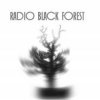

 DORIT CHRYSLER INTERVIEW
DORIT CHRYSLER INTERVIEW
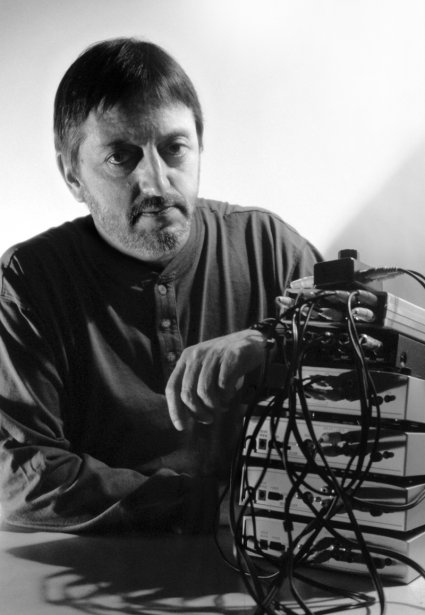
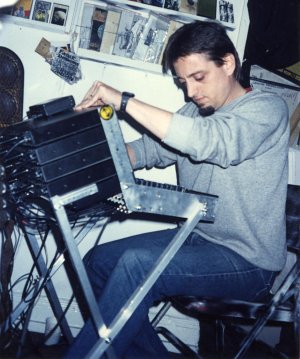
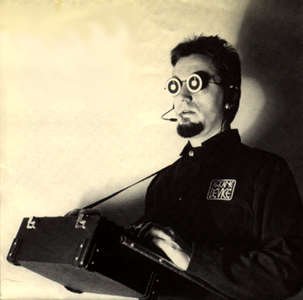
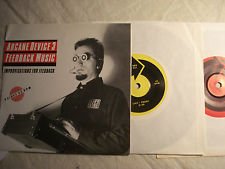
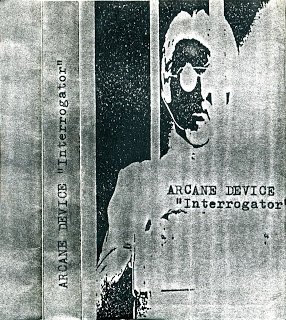
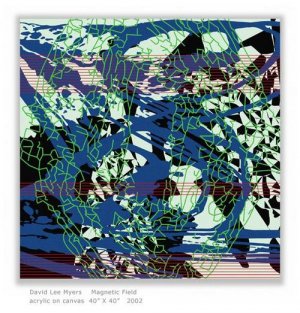
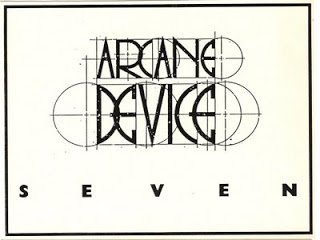
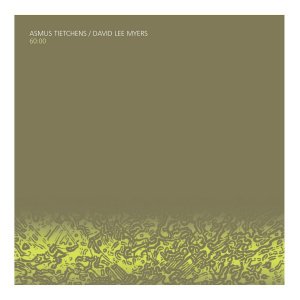
 blackforestmagazine
blackforestmagazine